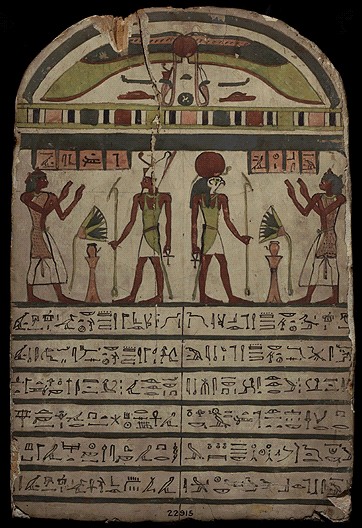|

|
STELA
OF BESENMUT
Sycamore fig wood, paint on plaster
Middle 26th Dynasty, about 600 BC
|
|
|
This round-topped stela
is divided into three sections. At the top is a large curved hieroglyph
representing the sky, below which is a winged sun-disc from which
hang a pair of uraeus serpents. The hieroglyphs identify this as
a representation of "he of Behdet," a term for the (originally)
sky god Horus; this decoration is extremely common in the semi-circular
"lunette" at the top of stelae. The second and third parts
are divided into left and right sides, with a scene above and a
text relating to that scene below. On the left, Besenmut stands
in adoration of the god Atum, represented in his usual form of a
man wearing the double crown of Upper and Lower Egypt. |
|
NEXT IMAGE
| Slide Show Index

All images reproduced by permission
of the Trustees of the British Museum. Informational text provided by
the British Museum.
The History Place Terms
of Use: Private home/school non-commercial, non-Internet re-usage only
is allowed of any text, graphics, photos, audio clips, other electronic
files or materials from The History Place™
|
|

